Shuri Castle is located in the southern part of Okinawa’s main island, within the city of Naha.
From 1429 to 1875, during the Ryukyu Kingdom era, Shuri Castle flourished as the center of the kingdom’s politics, diplomacy, and culture.
In 2000, it was registered as a World Heritage Site as part of the “Gusuku Sites and Related Properties of the Kingdom of Ryukyu.”
For tourists, a typical visit lasts about 30-45 minutes.
The castle is equipped with a paid parking area and is conveniently close to Naha Airport, making it an accessible tourist destination.
※Please note, due to a fire in 2019, Shuri Castle’s main hall, north hall, and south hall were completely destroyed and are currently not viewable. (Restoration and reconstruction are planned for 2026)
- Evaluation of Shuri Castle
- Information of Shuri Castle
- Highlights of Shuri Castle
- Site of the Seiden Main Hall : A Striking Vermilion Symbol of Okinawa
- Shureimon Gate, Featured on the 2000 Yen Note
- Sonohyan-utaki Ishimon (Stone gate of the Sonohyan Shrine)
- Kyuukeimon Gate
- Kankaimon Gate with Distinctive Shisa Statues
- Beautiful Stone Walls with Smooth Curves
- Estimated Duration: 80 Minutes
- Shuri Castle’s Admission Fees
- History of Shuri Castle
- Access & Paking information
- Summary
Evaluation of Shuri Castle
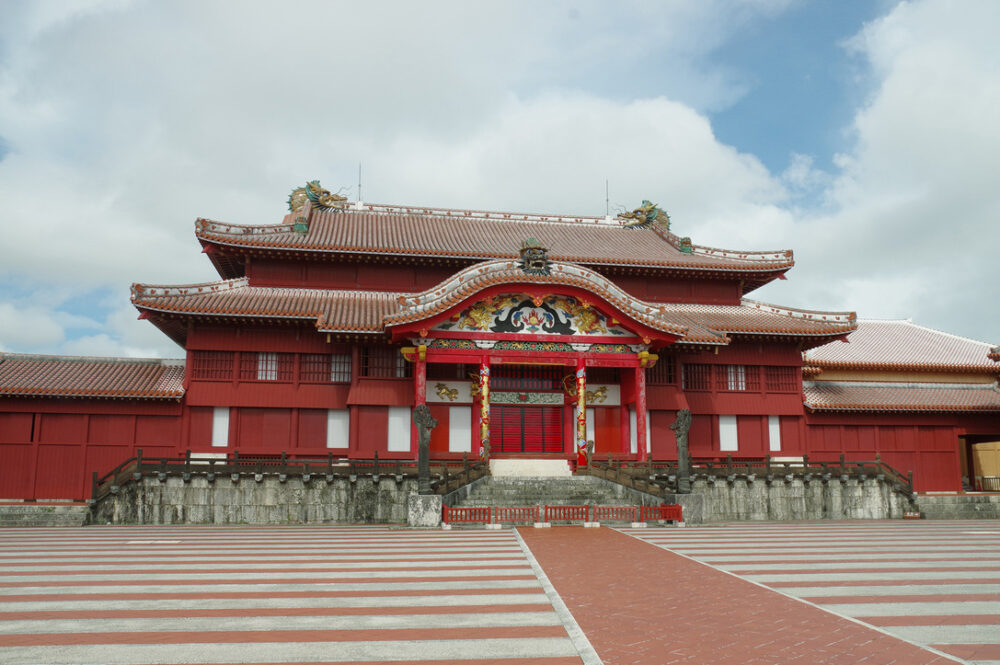
Notes: This evaluation is compared with other castles and ruins in Okinawa by Okinawa Bookmark administrator
Information of Shuri Castle
| Business Hours (Free Area) | April to June & October to November: 8:00 AM to 7:30 PM July to September: 8:00 AM to 8:30 PM December to March: 8:00 AM to 6:30 PM |
| Business Hours (Paid Area) | April to June & October to November: 8:30 AM to 7:00 PM July to September: 8:30 AM to 8:00 PM December to March: 8:00 AM to 6:00 PM |
| Closed | Open year-round |
| Admission Fees (Individuals) | Adults: 400 yen Youth (High School Students): 300 yen Children (Elementary & Middle School Students): 160 yen |
| Admission Fees (Groups, 20 or more) | Adults: 320 yen Youth (High School Students): 240 yen Children (Elementary & Middle School Students): 120 yen |
| Required Time | About 80-120 minutes |
| Parking | Available (Paid) |
| Restroom | Available |
| Address | 1-2 Shuri Kinjocho, Naha City, Okinawa Prefecture |
Shuri Castle is a symbol of Okinawa and was once the flourishing center of politics, diplomacy, and culture during the Ryukyu Kingdom era.
In 2000, it was registered as a World Heritage Site as part of the “Gusuku Sites and Related Properties of the Kingdom of Ryukyu.”
Highlights of Shuri Castle
Site of the Seiden Main Hall : A Striking Vermilion Symbol of Okinawa
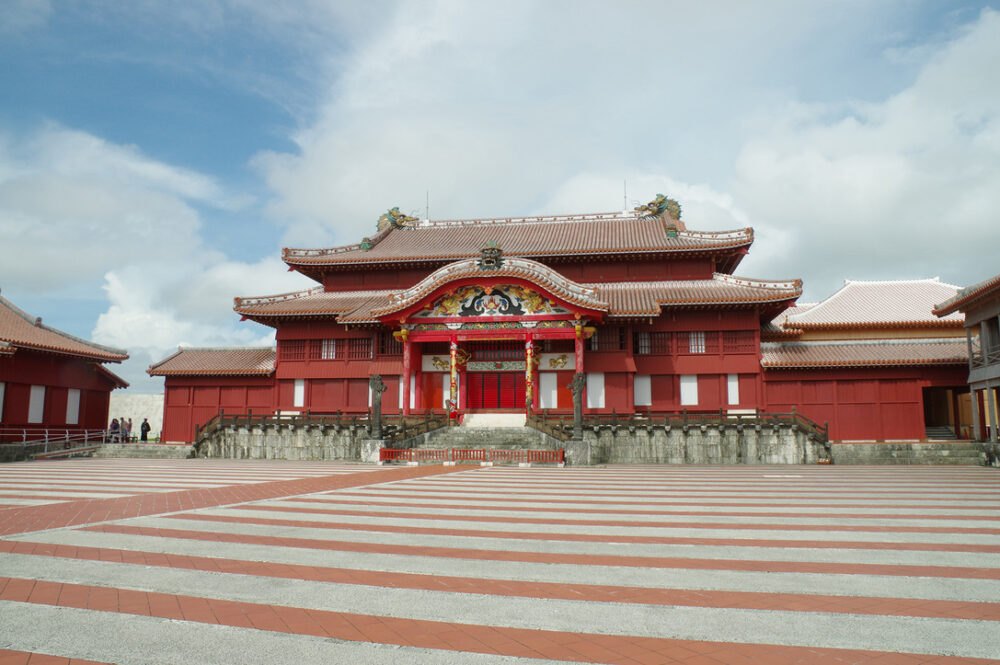
The Site of the Seiden Main Hal is a symbol of Shuri Castle, and its vivid vermilion beauty captivates all who visit.
The interior, meticulously adorned with a throne and carvings, is a precious heritage that continues to tell the story of Ryukyu’s history.
※Due to a fire in 2019, the Main Hall, North Hall, and South Hall of Shuri Castle were completely destroyed and are currently not viewable. (Restoration and reconstruction are planned for 2026)
Shureimon Gate, Featured on the 2000 Yen Note
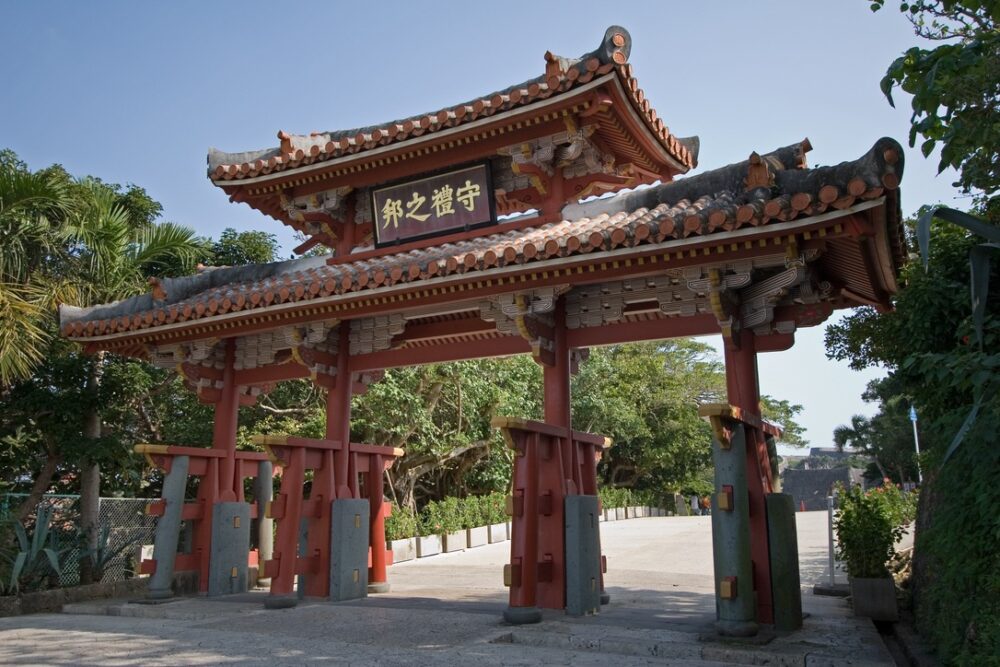
Shureimon, appearing on Japan’s 2000 yen note, is a gate that symbolizes the spirit of the Ryukyu Kingdom, “Shurei-no-Kuni.”
This gate is noted for its impressive, dignified appearance, embodying the essence of the Ryukyu Kingdom’s philosophy and heritage.
Sonohyan-utaki Ishimon (Stone gate of the Sonohyan Shrine)
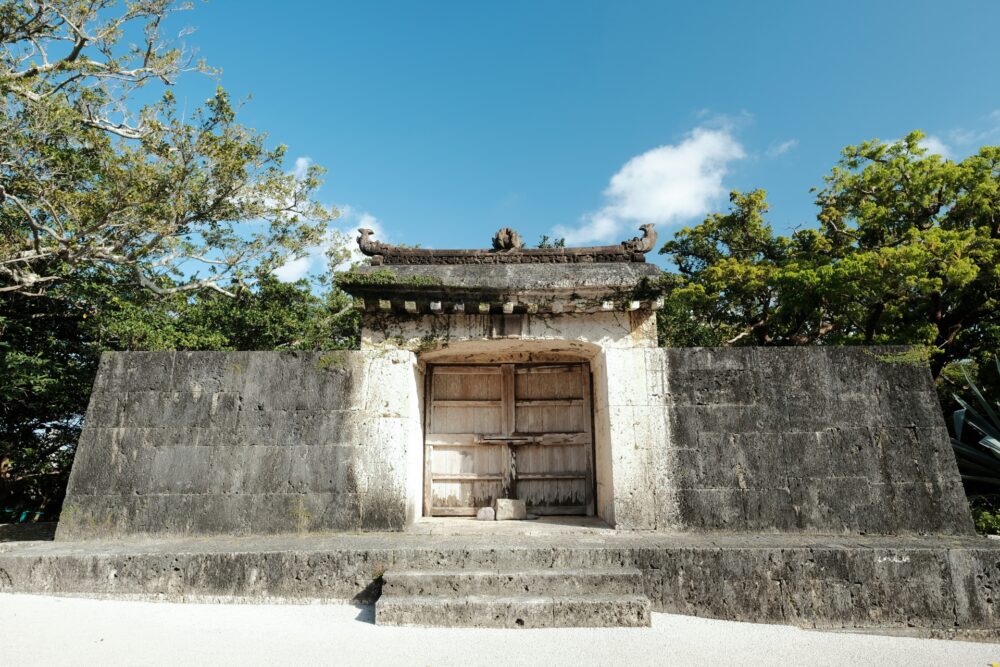
Sonohyan-utaki Ishimon (Stone gate of the Sonohyan Shrine)is not a common entrance for people to pass through, but rather a sacred site where the Ryukyu King performed safety prayers.
The forest that extends behind it is known as “Utaki,” and was the center of Ryukyuan faith. Passing through this worship gate allows one to connect with the spirit of ancient Okinawa.
Kyuukeimon Gate
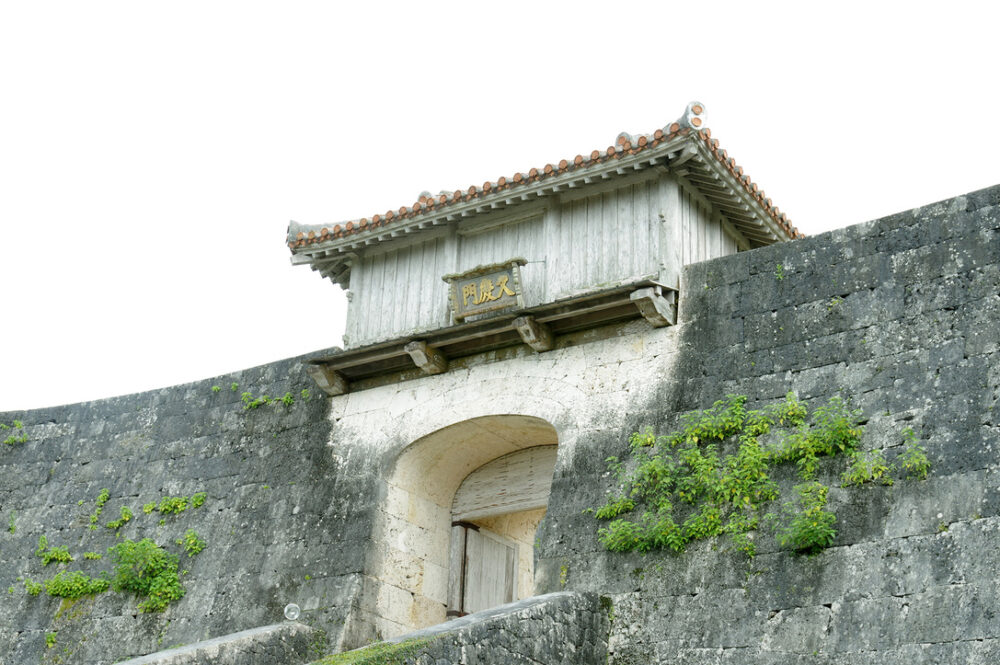
The Kyuukeimon is known as a service gate, primarily used by women.
This particular gate holds its own historical significance within the context of Shuri Castle.
Kankaimon Gate with Distinctive Shisa Statues
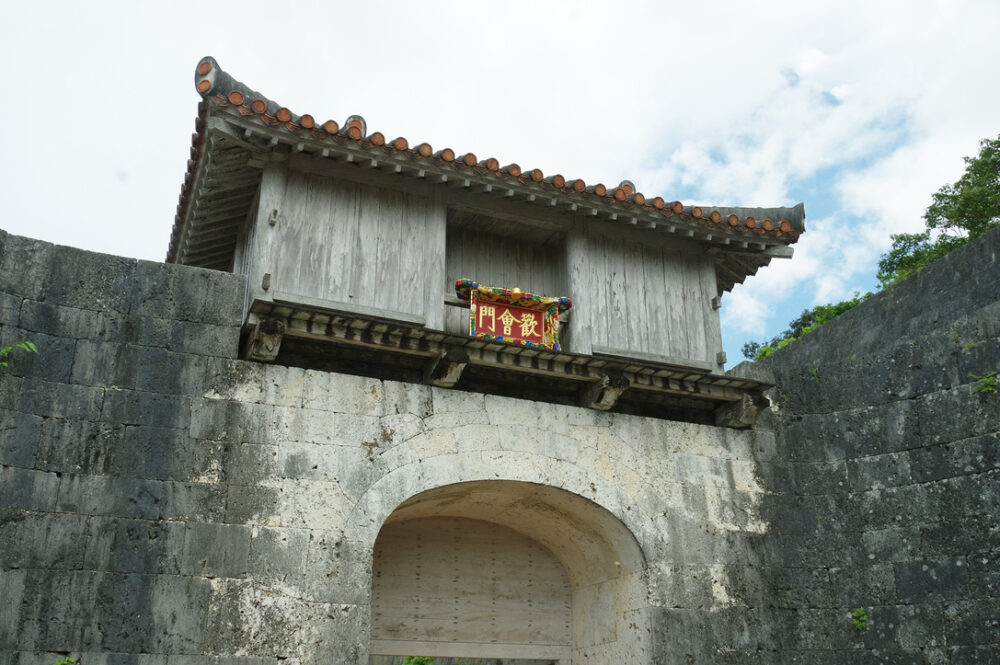
The Kankaimon Gate is adorned with powerful Shisa (lion-dog statues) on both sides, welcoming visitors with their imposing presence.
This gate, with its unique design and formidable Shisa, symbolizes Okinawa’s unique culture and is a significant feature of the castle’s architecture.
Beautiful Stone Walls with Smooth Curves
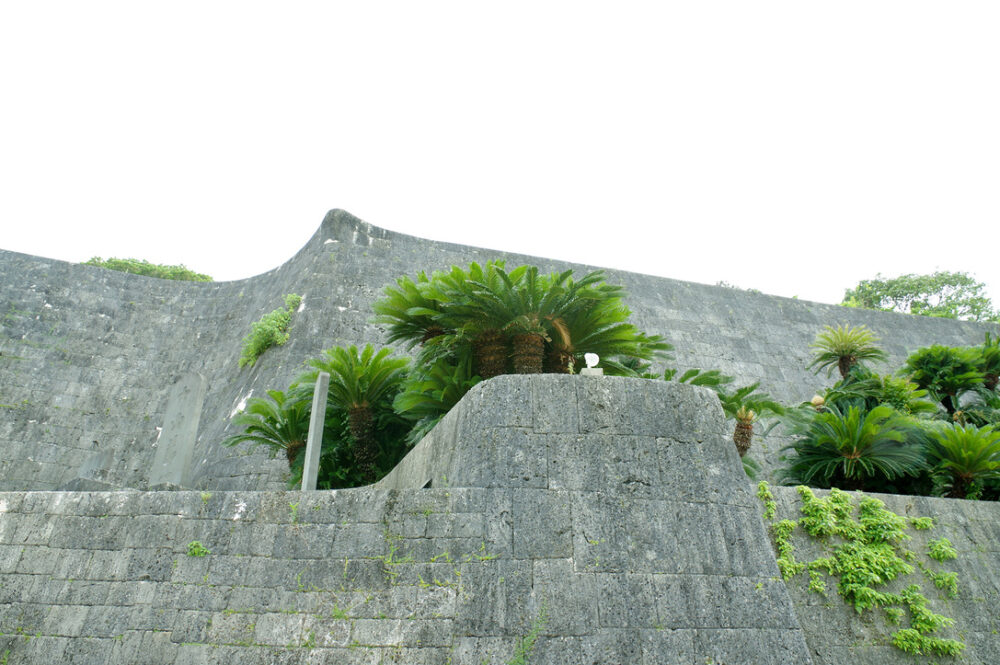
The stone walls of Shuri Castle are renowned for their high level of craftsmanship and beauty.
These walls, with their smooth, curving lines, captivate all who see them, showcasing a blend of artistic and architectural mastery unique to the heritage of Okinawa.
These walls are not just protective barriers but also works of art that reflect the sophisticated techniques and aesthetic sensibilities of the Ryukyu Kingdom era.
Estimated Duration: 80 Minutes
To thoroughly explore Shuri Castle, it’s advisable to allocate at least 80 minutes.
If you’re only visiting the free areas, 30-60 minutes should suffice. However, if you intend to enjoy both the free and paid areas, plan for approximately 80-120 minutes.
Please take your time at each highlight to truly immerse yourself in the history and culture of Okinawa.
This approach will allow you to fully appreciate the significance and beauty of Shuri Castle and its surroundings.
Shuri Castle’s Admission Fees
| Admission Fees (Individuals) | Adults: 400 yen Youth (High School Students): 300 yen Children (Elementary & Middle School Students): 160 yen |
| Admission Fees (Groups, 20 or more) | Adults: 320 yen Youth (High School Students): 240 yen Children (Elementary & Middle School Students): 120 yen |
History of Shuri Castle
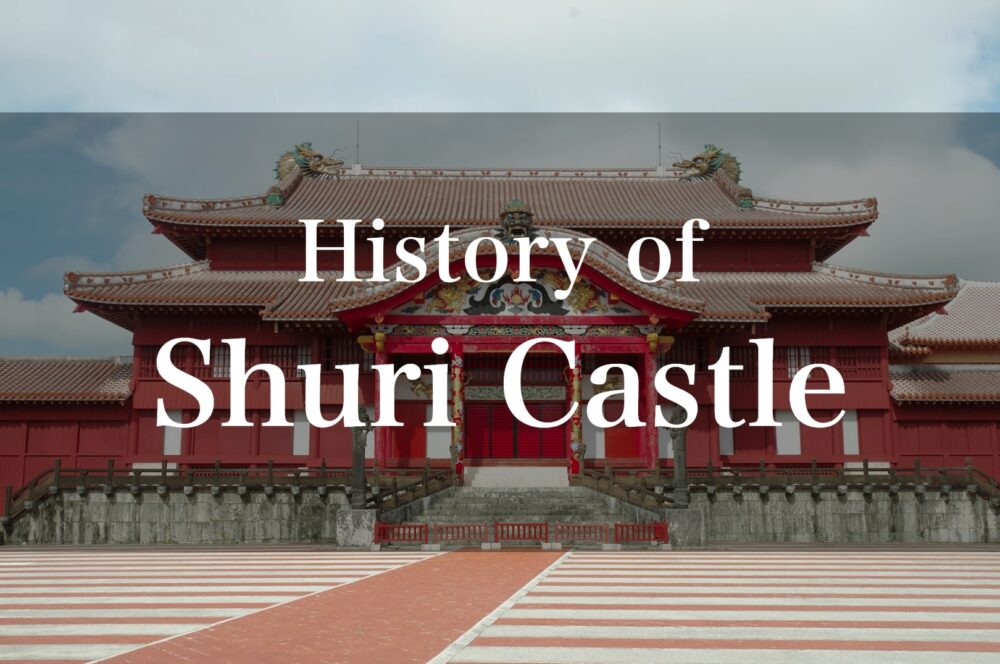
Shuri Castle, a prominent Ryukyuan castle in Shuri, Okinawa Prefecture, Japan, served as the palace of the Ryukyu Kingdom from 1429 until 1879, before it fell into neglect.
The castle was originally built in the 13th century by Shunbajunki, the second king of Chuzan, and played a key role in the region’s history, enduring many challenges over the centuries.
Contrary to the belief that it was first built in the late 13th to 14th century, it is said to have been established in the mid-14th century and was the base of Sho Hashi, the first king of the Ryukyu Kingdom.
Shuri Castle was the administrative center and royal residence of the Ryukyu Kingdom, significantly influencing the kingdom’s political and cultural life for over 500 years, until Okinawa became part of Japan in 1879.
The castle has been repeatedly destroyed and rebuilt, most notably during the 1945 American bombardment in World War II, after which it was almost completely destroyed.
It later served as a campus for the University of the Ryukyus before restoration efforts began. In December 2000, these efforts culminated in its designation as a World Heritage Site, representing the “Gusuku Sites and Related Properties of the Kingdom of Ryukyu.”
The reconstructed Shuri Castle, modeled after its 18th-century form, incorporates parts of its original walls and foundations.
It showcases architectural styles and decorative elements influenced by East and Southeast Asia, reflecting its history of international exchange and serving as a sacred site where Ryukyu kings conducted prayers.
Visitors to Shuri Castle can appreciate not only its stunning architecture but also its historical significance and the lifestyle and culture of the Ryukyu Kingdom era.
This site is a testament to Okinawa’s rich history, bridging the past and present and exemplifying the allure of Okinawan culture.
Access & Paking information
| Access | Approximately 25 minutes by car from Naha Airport |
| Address | 1-2 Shuri Kinjocho, Naha City, Okinawa Prefecture |
| Operating Hours for Prefectural Parking Lot | April to June & October to November: 8:00 AM to 7:30 PM July to September: 8:00 AM to 8:30 PM December to March: 8:00 AM to 6:30 PM |
| Parking | Available Small car: 400 yen Large vehicle: 1200 yen |
| Restroom | Available |
Shuri Castle is equipped with paid parking facilities.
In the vicinity of Shuri Castle, there are multiple parking areas, among which the “Prefectural Shuri Castle Park Parking Lot” is notable.
This convenience adds to the accessibility of Shuri Castle for visitors, providing ample parking space for those traveling by car.
Summary
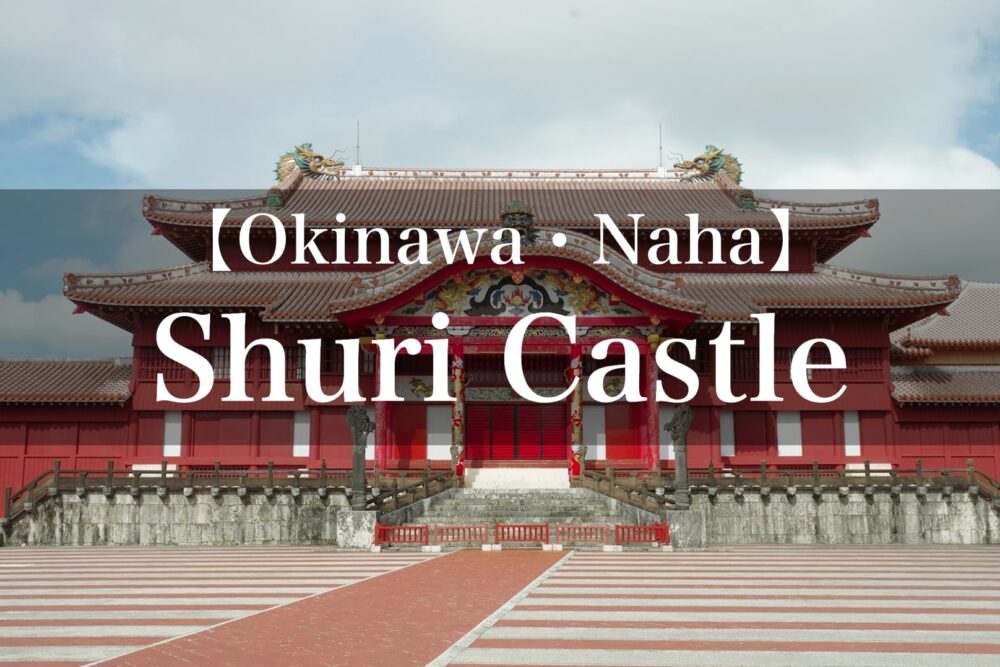
We explored Shuri Castle, a symbol of Okinawa Prefecture and a renowned tourist destination.
Shuri Castle holds significant historical importance, being registered in 2000 as a part of the “Gusuku Sites and Related Properties of the Kingdom of Ryukyu” World Heritage Site.
Unfortunately, due to a fire in 2019, the Main Hall, North Hall, and South Hall were completely destroyed and are currently not viewable.
However, there is anticipation for the planned restoration and reconstruction of these parts by 2026.
Thank you for reading and learning about Shuri Castle with me.


コメント